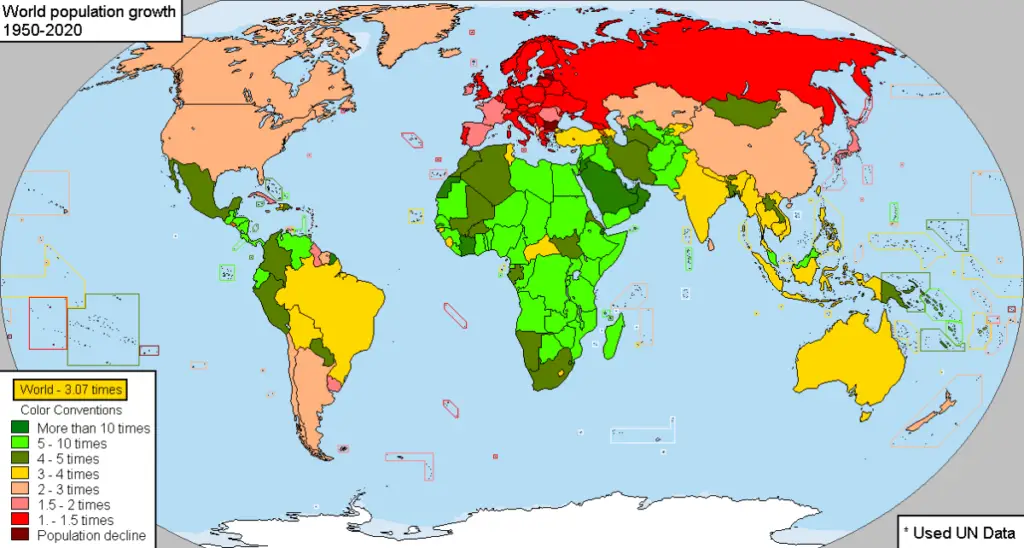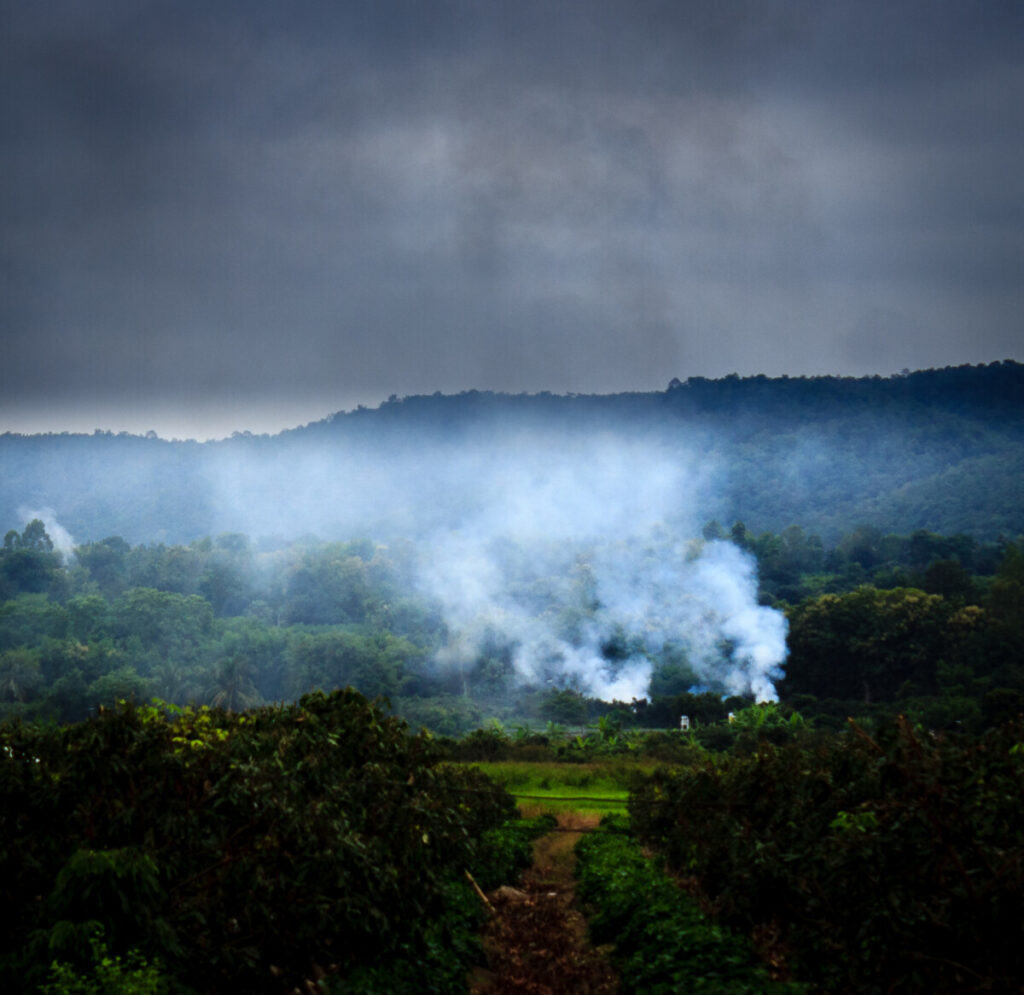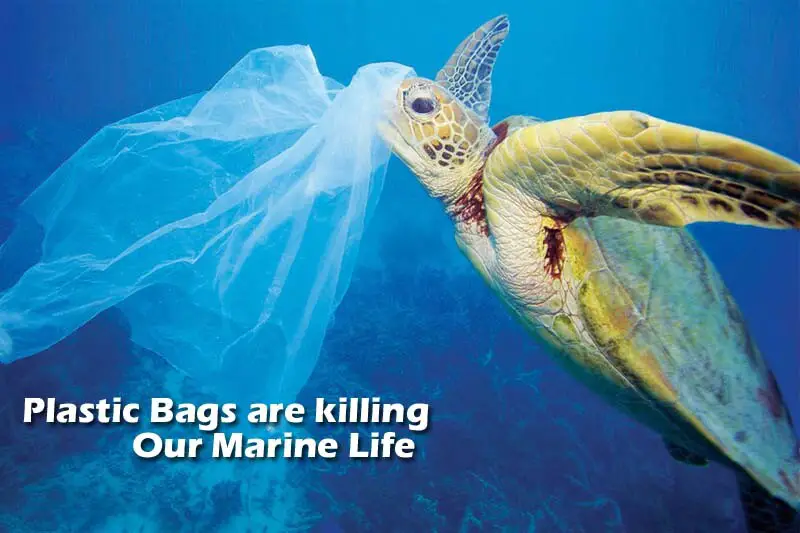It has become more critical than ever that we understand the question – what is environment protection? And then – how do we implement it? As the world grapples with pressing environmental issues, there seems to be no end in sight. The problems caused by climate change, deforestation, water scarcity, and loss of biodiversity, are almost overwhelming.
Environment protection refers to the preservation and conservation of natural resources and ecosystems for the present and future generations. It is a broad concept that encompasses a range of measures aimed at preventing, reducing, or mitigating environment degradation.
In a world where human activities are increasingly impacting environments, protecting the planet has become an urgent priority. Environment protection safeguards the health and well-being of humans and wildlife and also ensures sustainable development and economic growth.
Therefore, understanding the significance of environment protection and the various measures put in place to achieve it is essential for all individuals, organisations, and governments.
We cannot solve our problems with the same thinking we used when we created them.
Albert Einstein
This article explores the concept of environment protection, and deals with its importance to the world. Key environmental issues, policies and strategies for protecting environments are all covered.
Join me on this enlightening journey as we delve into the world of environment protection and learn how we can preserve the planet for future generations.
What is Environment Protection?
Environment protection is an interesting phrase to use because, as you are likely aware, we aren’t referring to environments as per the general definition. We specifically refer to the natural world and its elements. Human activity drastically affects plants, animals, lakes, mountains, skies, and oceans

The unfortunate reality is that we humans have a far more destructive impact on the environment than the environment has on us. We’ve scaled, evolved and swelled at such an alarming rate that the world’s population has ballooned. In the process, we’ve damaged habitats, polluted rivers and oceans, and caused irreversible damage to ecosystems.
Environment protection is thus an umbrella term for the measures taken to protect natural resources from further destruction or pollution. We understand that, beyond simply wanting to maintain the natural beauty of the world, it is essential to protect environments for future generations. There won’t be a future generation to speak of if we aren’t proactive and protective.
The Goals and Objectives
You cannot get through a single day without having an impact on the world around you.
– Jane Goodall
The objective of environmental protection is to acknowledge this and replace destructive habits with constructive and restorative habits. The goal must be to ensure future generations can interact with and enjoy the world as we do today. So, there must be a world to enjoy.
First, we must consume natural resources in a responsible way, so they are not depleted and can regenerate naturally. We must limit pollution and waste production, change energy sources from fossil fuels to renewable ones, reduce deforestation, and restore degraded ecosystems.
It isn’t realistic to expect us to have a net neutral impact on the world. We are a large, loud species that cannot be wrangled into a hive mind. However, we can have objectives and goals to:
- Educate the world about the importance of environment protection.
- Ensure that our use of natural resources is sustainable.
- Minimise the emission of greenhouse gases.
- Reduce air, land, and water pollution.
- Practice responsible waste management.
- Protect endangered species and their habitats.
With the right strategies and actions, we can protect environments for future generations. It is possible.
Types of Environment Protection Measures
Let’s focus on some specifics. What types of environmental protection measures can we take or are already being taken?
Air Pollution – Cause and Control

Air pollution is the greatest environmental threat to public health globally and accounts for an estimated 7 million premature deaths every year. Air pollution and climate change are closely linked as all major pollutants have an impact on the climate and most share common sources with greenhouse gases. Improving our air quality will bring health, development, and environmental benefits.
UN Environment Programme
Polluted air is a deadly, deadly problem. There is a lethal amount of particulate matter 2.5 (PM2.5) in the air which is linked to many health problems. They include respiratory illnesses, such as bronchitis, heart diseases, strokes, and lung cancer.
Air pollution is caused by solid and liquid particles and certain gases that are suspended in the air. These particles and gases can come from car and truck exhaust, factories, dust, pollen, mold spores, volcanoes, and wildfires. The solid and liquid particles suspended in our air are called aerosols.
Climate Kids
Not enough control measures are in place to alleviate the effects of the silent killer. The problem is caused by a number of factors, many of which are a result of human intervention. The number of fossil fuels and chemicals released into the atmosphere require solutions focused on reducing emissions and encouraging industries to switch to cleaner sources of energy.
One of the most worrying and little-known causes of pollution is the dramatic growth in corn agriculture for animal feed in Southeast Asia. Deforestation to produce corn has extended the crop burning months to 6 each year, making Myanmar, Laos, and the North of Thailand almost uninhabitable between January and July.
Water Pollution Control
Without water all life will die, yet we treat it with so much disrespect, it is a most abused resource. Water pollution comes in many forms; industrial waste, agricultural runoff, oil spills, sewage…the list goes on. It is estimated 50 percent of all US rivers are too polluted, where swimming is more than dangerous.
Water pollution control is essential to protect the vital resource. This includes:
- wastewater treatment,
- the introduction of regulations for industry and agriculture,
- public education campaigns on water conservation, and
- improved sewage facilities.
Waste Management
For all the talk of reducing and reusing, data shows less than 20 percent of recyclable waste ends up recycled. We produce more waste than ever, and it has serious impacts on environments. We produce billions of metric tonnes of waste every year, and a lot of it ends up in landfills or we dump it in the sea.
Waste management is an important part of protecting environments. It involves:
- investing in better recycling infrastructure,
- introducing laws to reduce single-use plastics,
- incentivising companies to produce more sustainable products, and
- encouraging citizens to be mindful of their consumption habits.
Biodiversity Conservation
We live in a world of immense diversity, beauty, and intricacy. We can walk in a rainforest and hear twenty different birds calling and forget that biodiversity looks far different to the way it did a century ago. Species are disappearing, which has serious repercussions for environments.
Conservation is essential to protect biodiversity and ensure the preservation of species. Such measures involve:
- creating wildlife reserves,
- establishing protected areas,
- reducing habitat destruction,
- introducing anti-poaching laws and sanctions, and
- educating communities on the importance of biodiversity.
Climate Change Mitigation
Seas are rising, and temperatures are soaring with every passing year. Polar bears are struggling to survive, and coral reefs are dying at an alarming rate. With 97 per cent of scientists convinced that humans are directly responsible for climate change, it is clear we must take action to protect the planet.
Climate change mitigation includes:
- investing in renewable energy sources,
- improving energy efficiency,
- increasing reforestation efforts,
- reducing emissions from transportation and agriculture,
- implementing green building standards and
- better urban planning practices.
Key Players in Environment Protection
It’s up to us as individuals to act and ensure that the planet is healthy and thriving. But governments, businesses, non-profit organisations, and other key players must also step in if we are to make a real difference. They undoubtedly hold immense power and influence, and if they make the right decisions, we can take a huge step forward.
The unfortunate truth is climate change and environmental protection are irrevocably linked with the economy – and, therefore, with politics. There are those who should be key players who choose to ignore the issue, because there are other agendas influencing their decisions.
Some of the strongest voices among environmental key players are those with passion. Greta Thunberg burned so brightly because she was speaking out of love and care for the planet. Others, such as Jane Goodall, David Attenborough, and David Suzuki, have done the same for years.
We need key players from different sectors to collaborate and make lasting changes. But we also need to do everything in our power as individuals.
Importance of Protecting Environments
We should all know environmental protection is essential to sustain life on Earth. We may not always think about why, but believing protecting environments from climate change and pollution is vital for all species, is a good start.
Protecting our Health

We see the impact of environmental degradation on our health in extremely violent ways.
Germs like viruses, bacteria, parasites, and fungi, cause Zoonotic diseases. COVID-19 was an outcome of human contact with animals. Often caused by deforestation and destruction of habitats, similar viruses are likely to continue popping up with increasing severity.
Pollution affects air quality, which in turn affects the health of humans, plants, and animals alike. It’s linked to respiratory problems as well as an array of other serious health issues.
Global warming causes bizarre and intense weather events like severe droughts, tsunamis, heatwaves, floods, and monsoons. It is also responsible for disruption in the food chain, which has a knock-on effect on our diet.
Protecting the health of the natural world is synonymous with protecting our own health.
Preserving Ecosystem Services
Ecosystems provide us with several crucial services. They include:
- clean air and water,
- food,
- climate regulation,
- storm protection and
- flood control.
Without them, we could not sustain our lifestyles or even survive.
But it is more than just about sustaining life for humans – it’s about maintaining the balance of the planet. Our natural world works harmoniously to regulate itself ensuring everything is in check. If one part fails, then so does the system, like a house of cards falling if you remove one card from the bottom.
Without ecosystem services, we could not sustain ourselves. The concrete jungles we live and work in, would be rendered useless and would crumble.
Economic Benefits
“Preservation of open space, trails, parks and greenways creates jobs, enhances property values, expands local businesses, attracts new or relocating businesses, increases local tax revenues, decreases local government expenditures through the natural provision of ecosystem services, decreases the cost of recreation and promotes a sense of local community.” – Conservation Tools
In other words, protecting our environment is good for business.
Conserving and protecting nature has a range of economic benefits that can be felt at all levels – from household to regional to global. We’re already seeing how this works in the tourism industry, with people flocking from all over the world to experience untouched wildernesses and natural wonders.
In addition, protecting our environment supports clean energy jobs, which are only likely to increase as renewable energy sources grow more popular.
Sustainable Development
As the world’s population grows, so too do its needs. To meet these needs without causing further damage to our environment, we need to develop in a way that doesn’t cause pollution or deplete resources. This means conserving natural habitats and developing smart cities with renewable energy sources.
It also means leading by example – setting an example for other countries and people around the world on how to care for their environments while still achieving sustainable growth.
Environmental Issues
So, what are the specific issues bringing us to this discussion in the first place? We’re going to focus on the Big Six; the list of six issues at the forefront of environmental protection.
Global Warming
Though often used interchangeably with climate change, global warming is the precursor to climate change. It’s the warning that serious damage is about to follow, and not just in the melting icecaps (although that’s a devastating and serious issue).
Global warming happens when the Earth’s atmosphere traps more heat than it releases, causing an increase in temperature. The reason we caught onto climate change in the first place is that our temperatures started to rise at a much higher rate than history has seen before.
Like a fever warning the human body, the earth overheating is a warning of danger. We see the effects of global warming everywhere, from extreme weather, hurricanes, floods, storms, tsunamis, earthquakes, rising sea levels, to mass coral bleaching.
Deforestation
Between 2015 and 2020, we uprooted 10 million of hectares of forest and converted it for other use. It’s unbelievable, but that is the size of Iceland.
This is deforestation – the rapid cutting down of forests for the purpose of agriculture, urbanisation, and other so-called needs. This major contributor to climate change and loss of biodiversity, removes vital habitats and resources from the planet.
When we erase habitats, we impact the food chain and it decreases the biodiversity of the planet.
The terrifying aspect of deforestation is that we have the capability to wipe out entire species in the blink of an eye.
Water Scarcity
How could we ever take water for granted?
It may be hard to believe, but it’s true – 780 million people lack basic access to clean and safe drinking water. This means 1 in 10 people can’t access the one basic life resource needed to keep them alive.
A combination of factors cause a scarcity of water, such as:
- population growth,
- climate change, and
- unsustainable use of resources.
We can reduce or manage all these factors more effectively if we pay attention and make an effort.
Lack of clean water leads to:
- malnutrition,
- poverty,
- displacement, and
- death.
It is one of the most serious environmental issues facing us. And it could be argued, it is the one above all others where we cannot afford to fail.
Soil Degradation
A beautiful documentary called Kiss the Ground delves into an issue rarely put under the spotlight – soil degradation. This is when an area of land becomes unable to sustain its ecosystem and productivity because of human interference.
Soil degradation is caused by overgrazing, deforestation, urbanisation and climate change, all of which make the soil too dry or depleted in nutrients for it to function properly. This leads to desertification. The process began in parts of the world where food production is greatly impacted as once fertile land becomes desert.
The solution is better farming practices that allow us to harvest resources without depleting them. Regenerative agriculture is one of the most promising answers.
Loss of Biodiversity
Between 1970 and 2018, global wildlife populations fell by just under 70 per cent. This loss of biodiversity – meaning the variety of species in a given area – has a ripple effect on the planet that can’t be ignored. It affects everything from food production to water supply and climate stability.
Ocean Acidification

The ocean is a huge part of the planet’s ecosystem. It’s home to more than 70 per cent of the Earth’s biomass and provides us with vital resources such as food and oxygen.
But because of harmful human activities –burning fossil fuels, overfishing, and pollution – parts of the ocean are becoming increasingly acidic. This has a devastating effect on marine life. It causes coral bleaching, depletes oxygen levels in the water, and threatens entire species with extinction.
Environment Protection Policies and Strategies
Thankfully, there are passionate advocates and conservationists working tirelessly toward a better future. We’ve seen a few strong protection policies and strategies get rolled out thanks to their efforts.
International Conventions and Treaties
The first step to environmentally friendly policies is an international agreement. The Paris Agreement, for example, was signed by 195 countries in 2016 and encourages each signatory to reduce their greenhouse gas emissions to tackle global warming.
There’s also the Convention on Biological Diversity, which focuses more on protecting habitats and ecosystems. It was signed in 1992 by 150 countries and encourages sustainable development that doesn’t deplete resources.
And, finally, the Global Goals. 17 goals outlined by the United Nations to end poverty, protect the planet and ensure prosperity for all.
National Environmental Laws and Regulations
Getting down to the national level, the protection depends on the country – some have more stringent regulations than others. Denmark, the UK, Finland, Malta, and Sweden are named as the world’s most environmentally friendly countries.
As an example, Denmark has the Climate Act. It’s the country’s commitment to reducing emissions by 70 per cent in 2030, compared to 1990 levels.
Many countries have created protected areas – land set aside for wildlife conservation and restoration. In the US, for example, there are 55 National Parks that cover over 85 million acres of land.
Corporate Social Responsibility
On a corporate level, a lot of greenwashing takes place. But in fairness, there are many companies that make a concerted effort to reduce their carbon footprint. A good example is Patagonia Clothing, which is committed to using 100 per cent renewable energy sources in its supply chain by 2025. The company donates 1 per cent of each sale to conservation.
Green Technologies and Practices
The sum of the parts is greater than the whole, so collective efforts make a big difference. There are green technologies and practices we can all invest in to impact the planet. Solar panels for homes, electric cars, and compostable packaging are all great ways to reduce your carbon footprint. Also turning lights off when they aren’t necessary, or buying second-hand clothes instead of new ones all helps.
Final Thoughts
Protecting environments is not just a moral responsibility but a necessity for survival. As we have seen, taking measures to protect our health, preserving ecosystems, and promoting sustainable development are crucial for survival.
While the world faces complex environmental challenges, it is not too late to act. From individual choices to collective efforts, there is much that we can do to make a positive impact on the environments that surround us. From reducing waste and adopting green technologies to supporting policies and legislation, every action counts.
As we look forward, we should recognise the future of Earth rests in our hands. It is our duty to work towards a world where the protection of environments is at the forefront of our actions and decisions. We must strive to strike a balance between economic development and environment protection.
So let us take a step towards a brighter and cleaner future. Embrace the concept of environment protection and work together to safeguard our planet. As John Muir once said, When one tugs at a single thing in nature, he finds it attached to the rest of the world.
So we must act to protect the planet, and in so doing, protect ourselves and future generations.
FAQs
Q1: What is environment protection?
A1: Environment protection refers to the preservation and conservation of natural resources and ecosystems for the present and future generations. It is a broad concept that encompasses a range of measures aimed at preventing, reducing, or mitigating environmental degradation.
Q2: Why is environment protection important?
A2: Environment protection is important for various reasons, including the preservation of human health, the conservation of ecosystem services, the promotion of sustainable development, and the mitigation of climate change impacts.
Q3: What are some key environmental issues that require protection?
A3: Some key environmental issues that require protection include global warming, deforestation, water scarcity, soil degradation, loss of biodiversity, and ocean acidification.
Q4: What are some policies and strategies for environment protection?
A4: Policies and strategies for environment protection include international conventions and treaties, national environmental laws and regulations, corporate social responsibility, and green technologies and practices.
Q5: Who are the key players in environment protection?
A5: The key players in environmental protection include governments, intergovernmental organisations, non-governmental organisations, corporations, and individuals. All these players have a role to play in ensuring that environments are protected for present and future generations.

